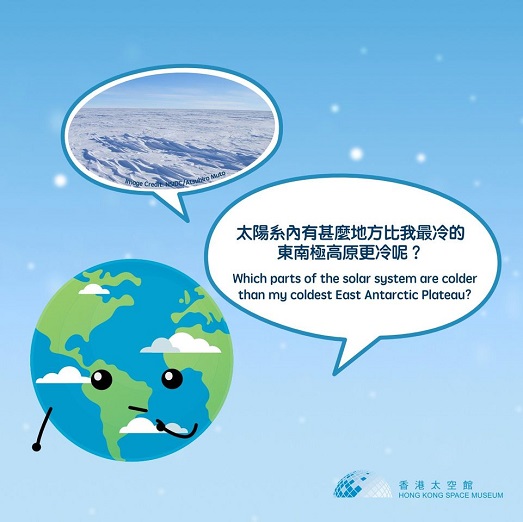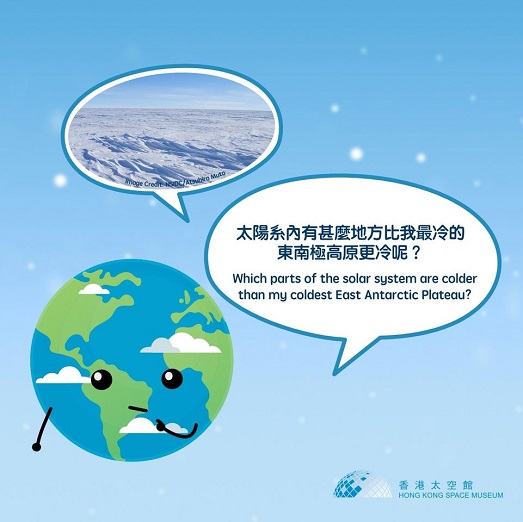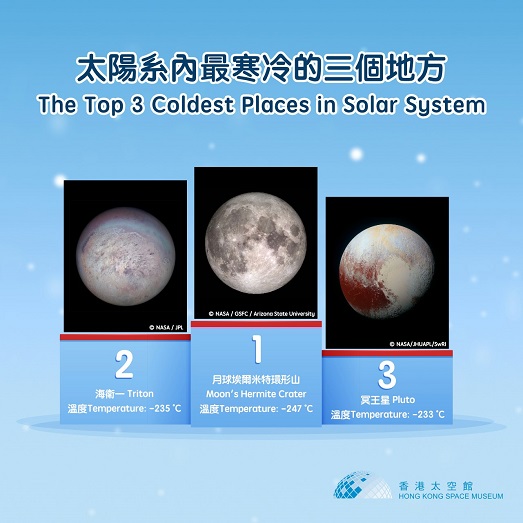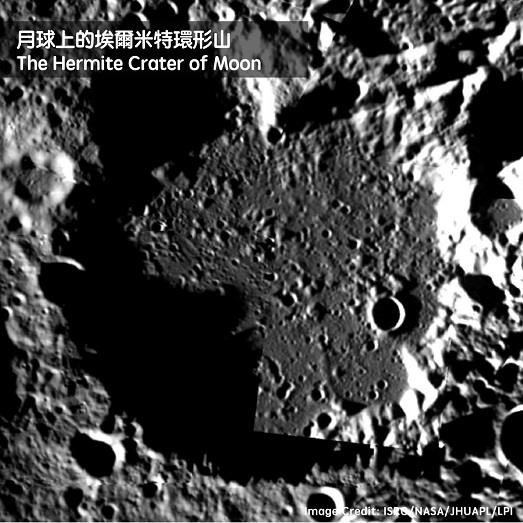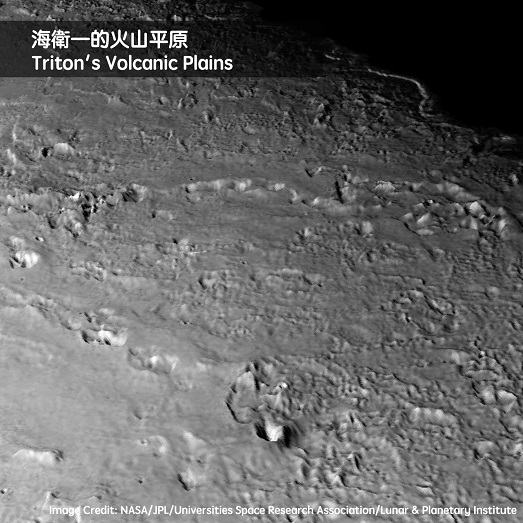Cold waves had hit us one after the other that the temperature in Hong Kong dropped to 8.6°C on the 1/1, we had the coldest New Year's Day in 16 years and we haven't had experienced the cold weather for quite some time. If you look at the coldest East Antarctic Plateau on Earth, where the lowest temperature can reach -93.2°C, the temperature here is no big deal! Yet, the East Antarctic Plateau is not in the same league in the frozen world of the solar system, and is warm in comparison!
Where is the coldest place in the solar system? Right on our Moon! The poles of the Moon receive little sunlight and some areas can never have sunlight at all. In 2009, NASA's Lunar Reconnaissance Orbiter recorded the lowest temperature of -247°C while approaching the edge of the Hermite, a crater at the north pole of the Moon. Recently, studies have found that craters contain ice. So far, we haven't found other celestial body or part of the celestial body in the solar system with a lower temperature.
The second place comes to Neptune's moon - Triton. Triton has multiple icy volcanoes on its surface, which spew out nitrogen, dust and methane. As the average temperature of the Triton is as low as -235°C, the compounds in gaseous state on Earth freeze into solid instantly after eruption. These frozen compounds then fall back to Triton's surface. The third place comes to Pluto, which its average temperature is only 2°C higher than Triton. Pluto and Triton have similar surface composition but has more solid nitrogen than Triton. Can you see the heart-shaped area at the bottom right of Pluto? It's a vast plain of solid nitrogen!


